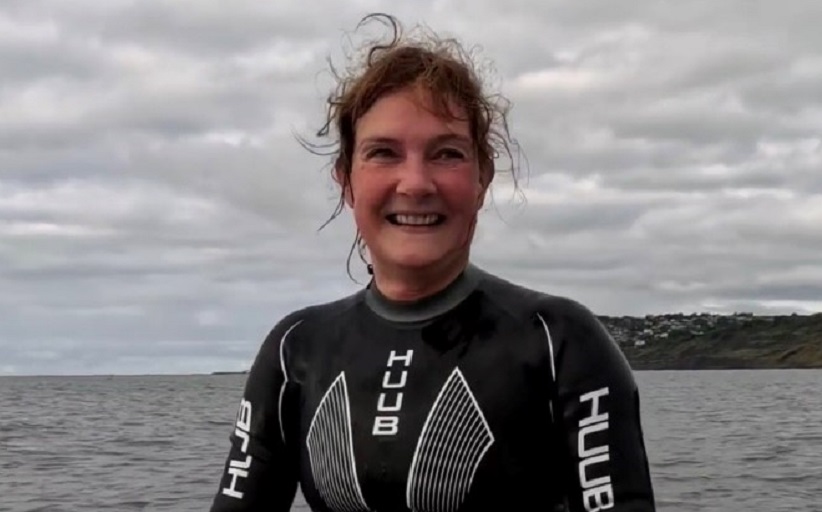Above: Claire Stephens, vice president, Global Client Team at BCD Travel, completed her sea swim for human trafficking awareness after nearly nine months of training.
The ”go” decision and a sleepless night
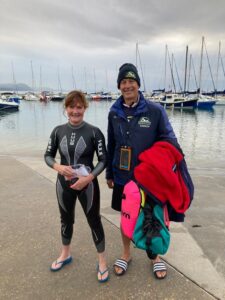
The day before my swim, the weather wasn’t promising. That’s typical in the U.K. I knew from the start the weather might prove challenging so I was prepared to go out in not quite perfect conditions. The ‘go’ decision was made late in the evening. The advantage of that was I didn’t have time to truly think about it too much, but I didn’t sleep very well that night.
The day of the swim, I was up just after 5 a.m. and standing on the slipway (boat ramp) at Lyme Regis by 7 a.m. It wasn’t quite the sunny day I anticipated. Nor was the sea completely calm and flat, but it was enough that I could give it a go. My coach took me out to the drop-off point and accompanied me all the way.
Backpaddling and a pollution warning
A sewage pollution alert had been issued for Lyme Regis the day before my swim. The alerts are based on weather forecasts, but aren’t an indication that sewage has been released into the water. To be on the safe side, I started out swimming on my back. The back swimming resulted in some zig-zagging that put me a little off course. My coach and I sorted it out and worked out a system of navigation between us, using hand signals. I eventually settled into a zone on my back. It was a cloudy day, with a swell and waves, at times, coming over my head.
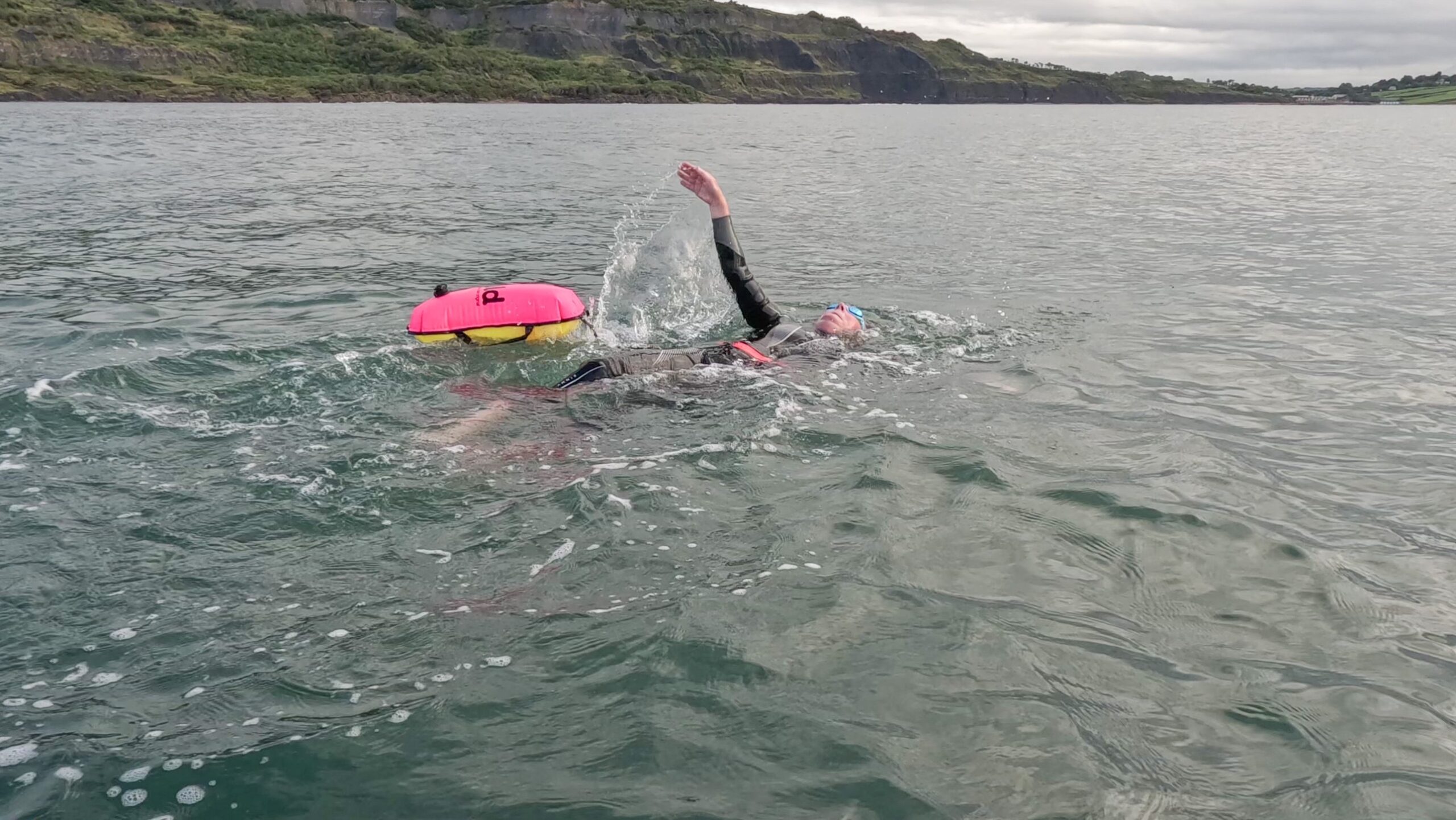
It’s difficult to put into words how I felt during the swim. The experience was almost otherworldly. I was completely at the mercy of the elements. Surprisingly, I did not get anxious. I simply focused on the task at hand, let my mind wander, stayed calm and just kept on swimming . This wasn’t about racing or doing it in a certain. It was about raising awareness for human trafficking. One hour and 28 minutes later, I was done. All the months of training, planning, dealing with the anxiety of drowning and choking, and learning to swim properly and breathe under the water paid off.
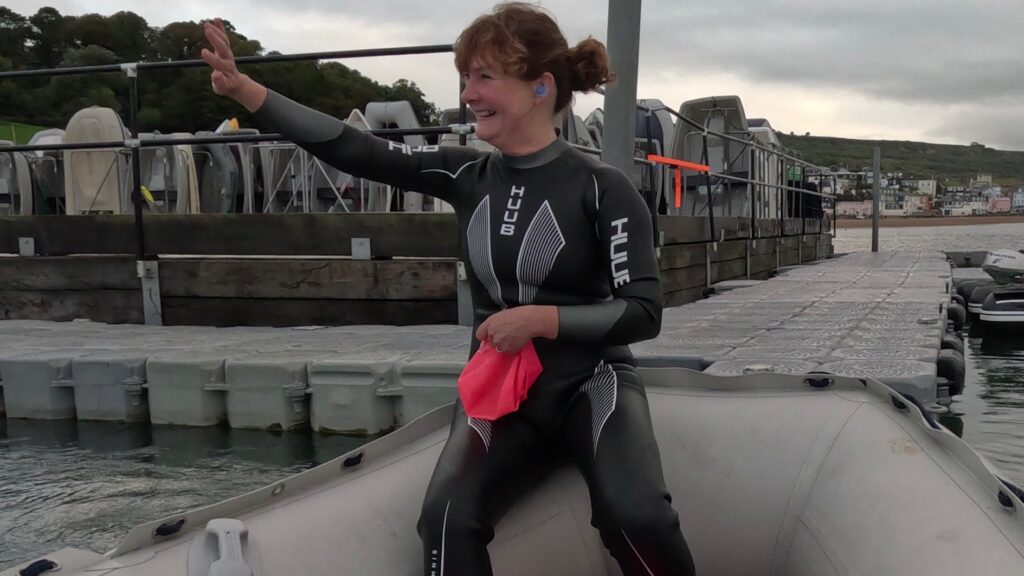
Mission achieved
A couple of days before the swim, I met with a client who read my story on our blog. She thanked me for educating her on a topic that she didn’t know about. She said she learned what indicators to look for when traveling, how to interpret and how to report. This meant everything to me because it was validation that I achieved exactly what I set out to achieve – awareness.
Possible signs of human trafficking
Today, approximately 50 million people around the globe are affected by human trafficking each year. Only one out of every 100 victims is rescued. We can help when we know the signs and how to report them.
9 signs of human trafficking
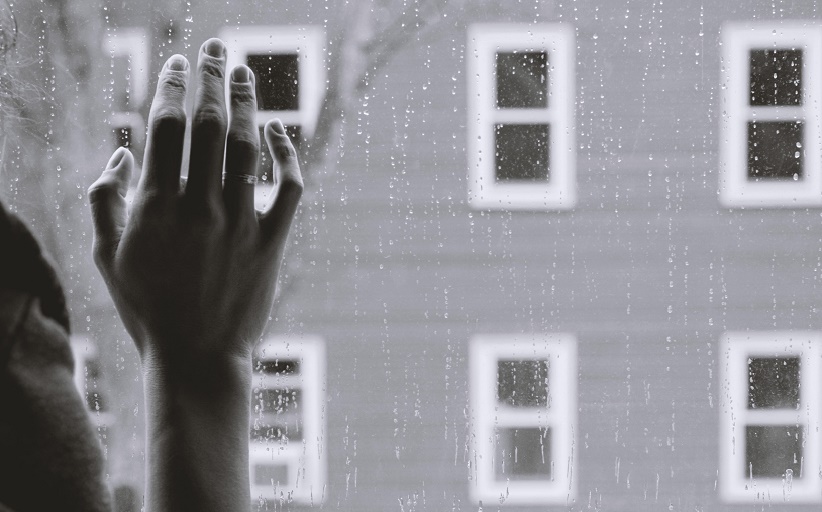
- Suspected victim who appears to lack access to or control of travel documents and money; their passport is held by someone else
- Minimal luggage/clothing
- Suspected victim seems disoriented and lost
- Suspected victim is restricted in movement and speech; they act as though they are under instruction
- Inadequate language skills
- Suspected trafficker is seen with many young children
- Suspected trafficker insists on paying solely in cash
- Suspected victim and/or trafficker have minimal interaction and eye contact with others
- Suspected victim has indications of physical and emotional abuse
What should you do if you notice signs of human trafficking?
- Discreetly observe as much as possible; remember location, clothing, descriptions, how many people, the time and any names used
- Do not confront the child or adult
- Discreetly alert authorities or security personnel near you
- If it’s not possible to help, then report the situation through channels like A21’s online system
